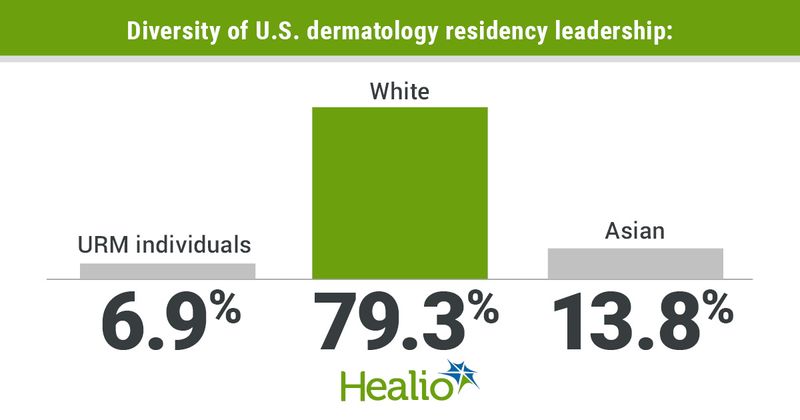Racial, ethnic diversity among academic dermatology faculty ‘continues to fall behind’
Key takeaways:
- Underrepresented in medicine (URM) individuals comprised 6.9% of academic dermatology leadership positions.
- URM individuals held 12.5% of residency positions.
The current racial and ethnic landscape of academic dermatology leadership is not reflective of students and patients, according to a study.
Underrepresented in medicine (URM) individuals are defined as anyone identifying as American Indian/Alaska Native, Black, Latino/Latina or Native Hawaiian/Pacific Islander.

According to Madelaine Fritsche, BS, of the division of biostatistics and bioinformatics at The Pennsylvania State University, and colleagues, URM applicants of medical schools report racial and ethnic diversity to be a very important factor when choosing a residency program. However, only 10% of all academic dermatology faculty identify as URM dermatologists, according to the study.
“It is known that dermatology is one of the least diverse fields in medicine,” Fritsche and colleagues wrote. “It continues to fall behind most other specialties in attracting and matching URM applicants.”
To determine the current racial and ethnic landscape of U.S. dermatology residency leadership as well as the relationship between leadership diversity and the composition of URM residents, the researchers conducted a study using a list of ACGME-accredited dermatology programs.
Results showed that of the 305 faculty members holding leadership positions, 6.9% identified as URM, 79.3% were White and 13.8% were Asian.
Specific leadership positions including chairs, vice chairs, chiefs, program directors, associate program directors and assistant program directors were widely occupied by white dermatologists (62.5%-81.9%) followed by Asian (10.6%-23.5%), Hispanic (0%-18.8%), Black (0%-5.3%) and Native American (0%-0.9%) dermatologists.
The number of URM leaders did not reflect the number of URM residents with 12.5% of residents identifying as URM compared with 23.5% that identified as Asian and 61.5% that identified as White.
This stands in contrast to the current U.S. population which is comprised of 33.4% URM individuals, 5.9% Asian individuals and 76.3% white individuals. Additionally, the rates of medical students applying to all residencies from 2017 to 2021 are 18%, 25.5% and 47.5% in URM, Asian and white populations, respectively.
According to Fritsche and colleagues, the presence of these disparities in academic dermatology leadership may be secondary to several reasons including “overlooked and undervalued unique capabilities, unconscious biases of those who decide on who [are] leaders, personal and family obligations, overt prejudice and lack of mentorship, among others.”
The researchers called for future studies to further determine these reasons.
“Delineating concrete steps in working toward more diverse leadership will improve several facets of the field, including, but not limited to support for URM medical students and residents and retention of URM faculty,” Fritsche and colleagues concluded. “It will ensure URMs have the space and voice to proportionately influence the practice of dermatology and, ultimately, strengthen the care available to vulnerable patients.”

